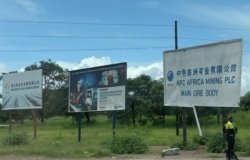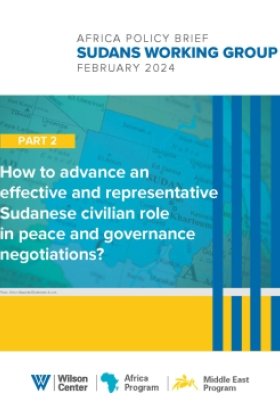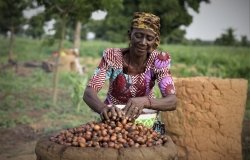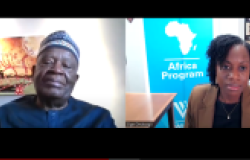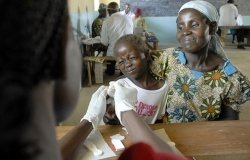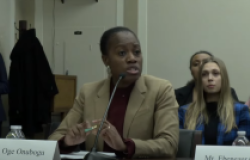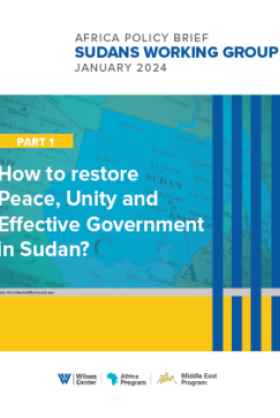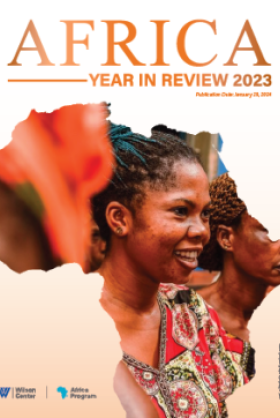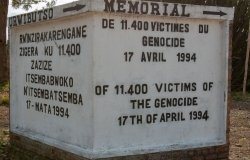Regional Integration and South-South Cooperation
H.E. Dr. Rob Davies, Minister of Industry and Trade, Republic of South Africa
Overview
Regional integration and South-South cooperation have emerged as core principles of the development agenda for many states in Sub-Saharan Africa. Removing tariffs and bureaucratic barriers to trade, strengthening regional infrastructure, and expanding market access are all key issues for Africa's growth and development. As both a member of the G20 and leader of the African bloc, South Africa is particularly well-positioned to serve as both a bridge and power broker in its push to deepen regional integration, increase South-South cooperation, and strengthen its stake in North-South trade agreements. In a September 29, 2009 address at the Woodrow Wilson Center entitled "Regional Integration and South-South Cooperation," H.E. Dr. Rob Davies, Minister of Industry and Trade to the Republic of South Africa, discussed the challenges and opportunities of regional integration and South-South cooperation as seen by the government of South Africa.
Davies explained that there is broad agreement that regional integration is both desirable and necessary. The key question, he asserted, is how to structure regional integration in Sub-Saharan Africa in a way that is sustainable and contributes to the promotion of economic development. To illustrate this point, Davies described two theoretical approaches to regional integration.
The "neo-classical" model, which builds upon the work of Jacob Viner from the 1950s, envisages a linear process in which there are successive changes in tariffs, trading arrangements, and other regulatory trade regimes. Thus a regional trade agreement might begin with a Preferential Trade Area and then progress "up the ladder of integration" to a Free Trade Area, Customs Union, Common Market, cumulating in an economic union and possibly a political union or federation. The Viner model broadly informed the process of European integration. But Viner argued that for regional integration to be beneficial, the effects of trade creation must be greater than the effects of trade diversion. Trade creation takes place when a country less efficient at producing a good stops production and trades with a country producing it more efficiently. This works well when two countries have complementary needs; that is, if country A produces what country B needs and country B produces what country A needs. Such conditions generally exist in developed countries.
Conversely, African economies tend to produce (often very similar) primary products for export outside their region rather than complementary products that can be traded and consumed within a preferential trade area. This can lead to trade diversion, when high tariff walls divert trade from the most efficient producer of a good located outside of the preferential trade area to a more inefficient producer within the preferential trade area. The benefits of trade creation within a preferential trade area therefore run the risk of being compromised or undermined by the effects of trade diversion.
An alternative view questions the emphasis on a linear sequence of trading regimes as a means to regional growth, focusing instead on some of the underlying structural characteristics of many developing countries' economies. It argues that the greatest barriers to interregional trade are not due to tariffs and regulatory barriers as much as to inadequate infrastructure and underdeveloped production strategies in developing economies.
Davies pointed out, for example, that although the South African Development Community (SADC) has already removed 97 per cent of duties on imports from outside members, the volume and balance in trade has changed very little. This is largely explained by the greater production capacities of other countries. Integration arrangements, if they are to be effective, must therefore be complemented and preceded by advances in cooperative arrangements that address infrastructure barriers and trade capacity-building. Moreover, addressing regional economy constraints to make integration viable will require political will from an early stage of the integration process.
The Minister went on to describe South Africa's view on the progress that has been made on SADC and the agenda for the future. The signing of the SADC Trade protocol in 1996 launched a process of asymmetrical and differentiated removal of tariffs on "substantially all" intra-SADC trade. Over the course of several years, South Africa and most SADC countries removed duties on goods from other SADC countries; the process was finally completed in 2005. In 2008, SADC launched a Free Trade Area (FTA), establishing a market worth roughly $360 billion with a population of $170 billion in twelve of SADC's fourteen member states. Angola and the DRC have yet to join the FTA but they are in the process of doing so which will increase SADC's market worth by an estimated $71 billion and another 77 million people.
Davies expressed cautious optimism for the future of SADC stressing that progress will require patience and hard work. There is broad agreement that the development of a customs union will not be possible by 2010 as some had hoped. Negotiation of a common external tariff will represent a major endeavor and will take time. Moreover, it will have to be built on the foundations of the FTA and regional cooperation programs. Davies therefore identified two broad priorities that South Africa is hoping to see from SADC: the consolidation of the SADC FTA and the "widening" of the SADC FTA across regional economic communities.
To further consolidate the SADC FTA, certain important issues have to be addressed: regulations concerning rules of origin must be completed for some sensitive products; greater customs cooperation is needed, as is the need for general trade facilitation to reduce or revise bureaucratic processes that cause delays at borders and discourage trade; finally, SADC countries need to aggressively push for coordinated infrastructure development programs and increase cooperation on selective productive sectors of industrial development. He highlighted the success of special bilateral development initiatives known as "corridors" - in which an infrastructure improvement is identified and followed up with economically favorable investment activities - as an example of how coordinated infrastructure and industrial development programs can take place.
Concerning the integration of the SADC across other regional economic communities, there is broad agreement that the SADC FTA should be extended to include the East African Community (EAC) and the Common Market for Eastern and Southern Africa (COMESA). Eventually, the FTA may come to encompass the Economic Community of West African States (ECOWAS) as well. SADC Trade Ministers have identified this as a major priority and are planning for its implementation.
Finally, Davies talked about the structuring of trade arrangements with third-country programs, most notably the EUs Economic Partnership Agreement (EPA) and the US Africa Growth and Opportunity Act (AGOA). EPAs are on-going trade negotiations with African and Caribbean countries which are supposed to shift non-reciprocal trade preferences to reciprocal preferences. The EPA process is based in part on the EU's perceived need to distinguish "advanced developing countries" from other developing countries. It also aims to promote "trade-related" commitments in areas such as investment rules, competition law, and trading-in-services agreements. Davies explained that although one of the stated goals of an EPA is to strengthen regional integration, South Africa has found the process to have unduly complicated the agenda for regional integration. This is in large part because SADC countries have found themselves divided into four separate negotiating configurations with different tariff schedules: the East and Southern Africa group, the Central African group, the East African Community, and finally, the rest of the SADC group. The result is that each country has negotiated different obligations and trading commitments with the EU, which undermines regional cohesion.
Concerning trading relations with the US, Davies argues that the basic architecture of AGOA does not need replacing but improvements are needed. As with the case of European EPAs, differentiated trade arrangements can be harmful to regional integration efforts. Bigger countries such as South Africa are important to regional groupings because they can provide market access and the partnership capacity that other countries need. Inclusion of all countries of a regional grouping in negotiations would therefore enhance integration. Widening AGOA product coverage would also help with product diversification, while a longer timeframe would encourage more investment, particularly for goods exported to the US. Finally, Davies praised a report from the U.S. Government Accountability Office to Congress that says that efforts to strengthen the AGOA framework should be coupled with increased infrastructure development assistance. Building trade capacity and cohesive regional trading agreements will be fundamental to accelerating regional growth.
Documents & Downloads
Hosted By

Africa Program
The Africa Program works to address the most critical issues facing Africa and US-Africa relations, build mutually beneficial US-Africa relations, and enhance knowledge and understanding about Africa in the United States. The Program achieves its mission through in-depth research and analyses, public discussion, working groups, and briefings that bring together policymakers, practitioners, and subject matter experts to analyze and offer practical options for tackling key challenges in Africa and in US-Africa relations. Read more
Thank you for your interest in this event. Please send any feedback or questions to our Events staff.
